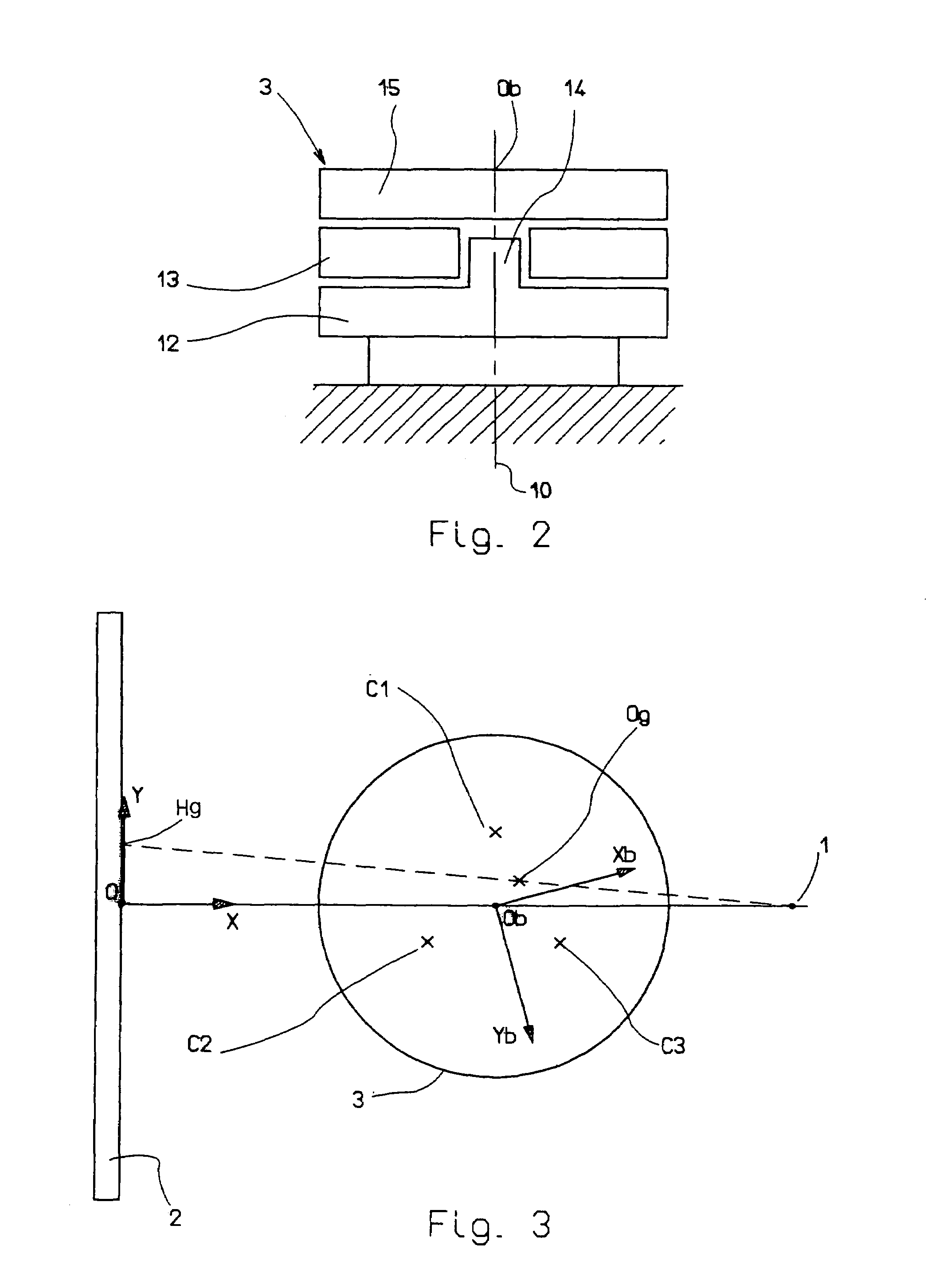Device for evaluating a position of balance for the human body
- Summary
- Abstract
- Description
- Claims
- Application Information
AI Technical Summary
Benefits of technology
Problems solved by technology
Method used
Image
Examples
Embodiment Construction
In the embodiment of the system shown in FIGS. 1 and 3, the system includes a source 1 of X-rays, support means for supporting a target plate 2 sensitive to X-rays and oriented vertically at a particular horizontal distance from the source 1 of X-rays, and patient support means 3 adapted to support a patient 4 in a fixed position between the source 1 of X-rays and the support means for the target plate 2. The system according to the invention is an installation for taking radiographic images. In other words, the source 1 of X-rays, and the support means for the target plate 2 can have a structure like those habitually used in medical radiographic image installations.
In accordance with the invention, the patient support means 3 include means for detecting the horizontal position of the global axis of gravity 5 of the patient 4 (the vertical axis passing through the center of gravity G of the patient), i.e. its coordinates in the horizontal plane, during operation of the source 1 of X...
PUM
 Login to View More
Login to View More Abstract
Description
Claims
Application Information
 Login to View More
Login to View More - R&D
- Intellectual Property
- Life Sciences
- Materials
- Tech Scout
- Unparalleled Data Quality
- Higher Quality Content
- 60% Fewer Hallucinations
Browse by: Latest US Patents, China's latest patents, Technical Efficacy Thesaurus, Application Domain, Technology Topic, Popular Technical Reports.
© 2025 PatSnap. All rights reserved.Legal|Privacy policy|Modern Slavery Act Transparency Statement|Sitemap|About US| Contact US: help@patsnap.com



